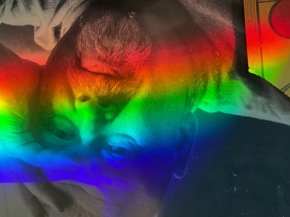2898316pmaoa by the 1940s competitive nationalisms
Q&@
IN EUROPE
STOOD IMPLICATED IN THE MOST BARBARIC WARS
AND CRIMES AGAINST RELIGIOUS AND ETHNIC MINORITIES WITNESSED IN HUMAN HISTORY.
It was only after the Second World War that European countries were forced, largely by American economic & military power,
to imagine less antagonistic political and economic relations, which eventually resulted in decolonisation and the European Union.
Yet only on the rarest of occasions in recent decades has it been acknowledged that the history of modernization is largely one of utter carnage & bedlam rather than peaceful convergence, and that the politics of violence, hysteria and despair was by no means unique to Nazi Germany, Fascist Italy or Communist Russia.
Europe's exceptional post-1945 experience of sustained economic growth with social democracy helped obscure deeper disruptions and longer traumas. The sanitized histories celebrating how the Enlightenment or Great Britain or the West made the modern world put the two world wars in a separate, quarantined box, and isolated Stalinism, Fascism & Nazism within the mainstream of European history as monstrous aberrations.
'Totalitarianism' with its tens of millions of victims was identified as a malevolent reaction to a benevolent Enlightenment tradition
of rationalism, humanism, universalism & liberal democracy - a tradition seen as an unproblematic norm.
It was clearly too disconcerting to acknowledge that totalitarian politics crystallized the ideological
currents (scientific racism, jingoistic nationalism, imperialism, technicism,
aesthecized politics, Utopianism, social engineering &
the violent struggle for existence)
flowing through all of
Europe in the
late 19th
century.
STOOD IMPLICATED IN THE MOST BARBARIC WARS
AND CRIMES AGAINST RELIGIOUS AND ETHNIC MINORITIES WITNESSED IN HUMAN HISTORY.
It was only after the Second World War that European countries were forced, largely by American economic & military power,
to imagine less antagonistic political and economic relations, which eventually resulted in decolonisation and the European Union.
Yet only on the rarest of occasions in recent decades has it been acknowledged that the history of modernization is largely one of utter carnage & bedlam rather than peaceful convergence, and that the politics of violence, hysteria and despair was by no means unique to Nazi Germany, Fascist Italy or Communist Russia.
Europe's exceptional post-1945 experience of sustained economic growth with social democracy helped obscure deeper disruptions and longer traumas. The sanitized histories celebrating how the Enlightenment or Great Britain or the West made the modern world put the two world wars in a separate, quarantined box, and isolated Stalinism, Fascism & Nazism within the mainstream of European history as monstrous aberrations.
'Totalitarianism' with its tens of millions of victims was identified as a malevolent reaction to a benevolent Enlightenment tradition
of rationalism, humanism, universalism & liberal democracy - a tradition seen as an unproblematic norm.
It was clearly too disconcerting to acknowledge that totalitarian politics crystallized the ideological
currents (scientific racism, jingoistic nationalism, imperialism, technicism,
aesthecized politics, Utopianism, social engineering &
the violent struggle for existence)
flowing through all of
Europe in the
late 19th
century.
17 aug 2017 - bewerkt op 20 aug 2017
- meld ongepast verhaal
Log in om een reactie te plaatsen.
- O 10 apr 2024 47394 Voor sòmmige hellenistische Jóden woog de
- O 10 apr 2024 47393Religieuze spanningen in Yeroesjalayim tùssen
- O 10 apr 2024 47392277Samen op reis door tijd en ruimte via myDi
- O 09 apr 2024 47391276 Joodse identiteit in de diaspora Óveràl
- O 09 apr 2024 47390 Sommige v/d Meest Typische Eigenschappen Der
- O 09 apr 2024 47389275 De ‘vroegste’ gelóvigen vormden ‘n hechte
- O 09 apr 2024 47388Wortels van de joden-, christenen- & moslims?
- O 09 apr 2024 47387274 SP had zichzelf ‘t eerst weer ìn de hand!
- O 08 apr 2024 47386 Een Wèl ZÉÉR bijzonder pinksterfeestje tóen
- O 08 apr 2024 47385 Gamaliël is ‘n gerespecteerde wetgeleerde en
- O 08 apr 2024 47384 DÍE úitleg van SP maakt het er níet ècht
- O 08 apr 2024 47383 ‘Wij moeten nu eenmaal G d meer gehoorzamen
- O 08 apr 2024 47382 Adverteren brainwash communicatie drukwerk
- O 07 apr 2024 4738166‘Ònder de maaltijd nam Yèsj brood, sprak de
- O 06 apr 2024 47380/65 ‘Yèsj zéi hen:“DOE DIE KRUIKEN VOL WATER“
